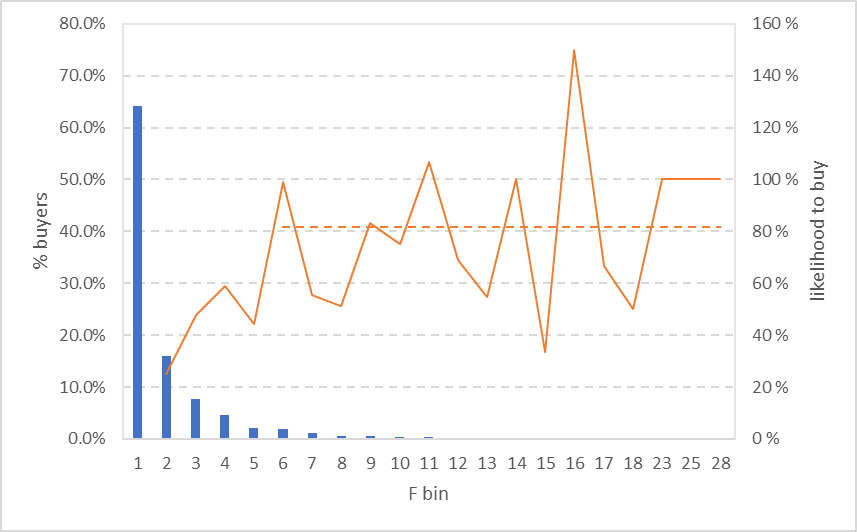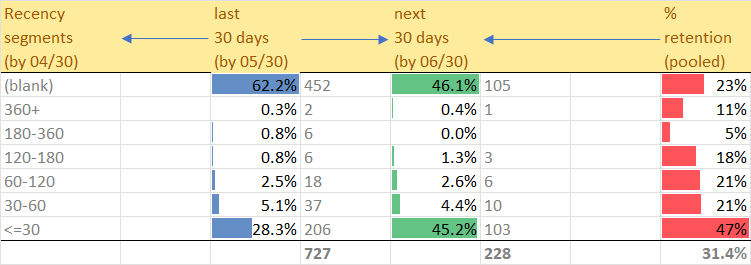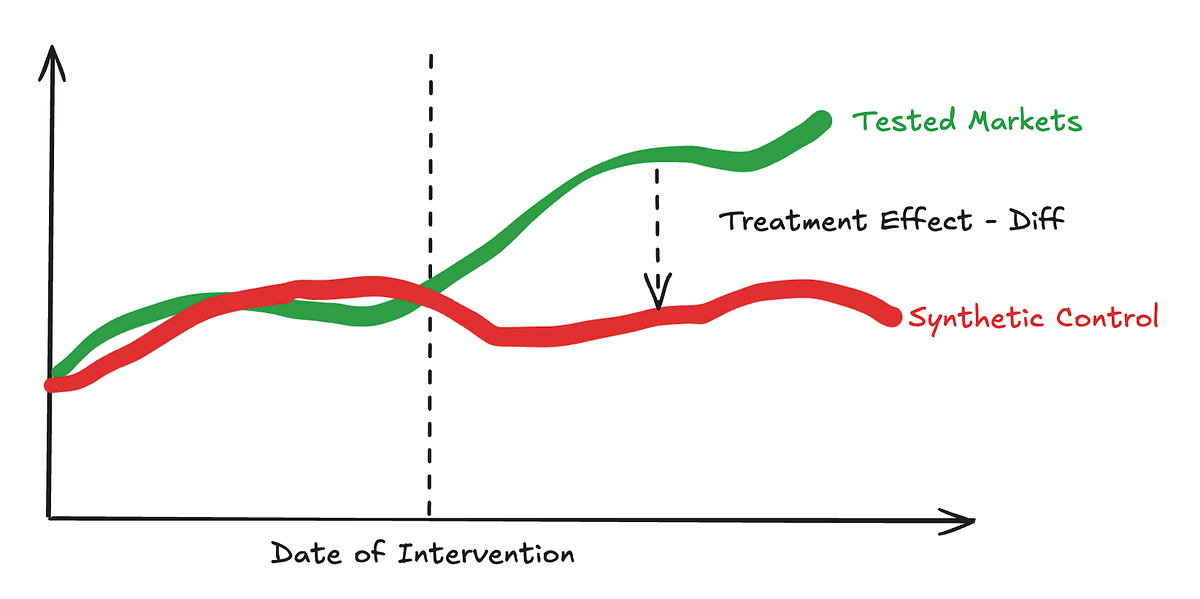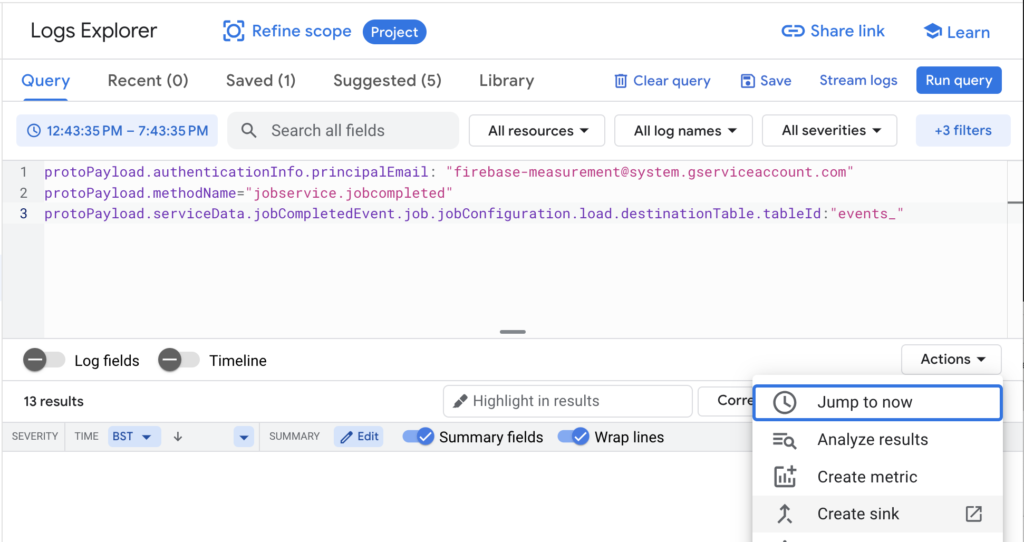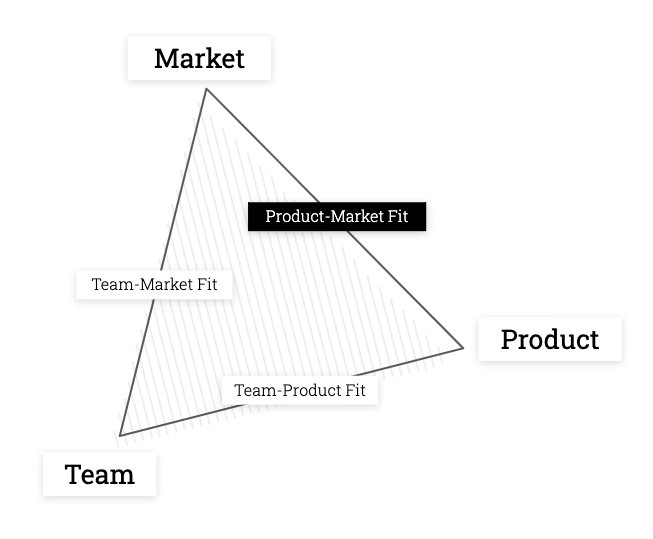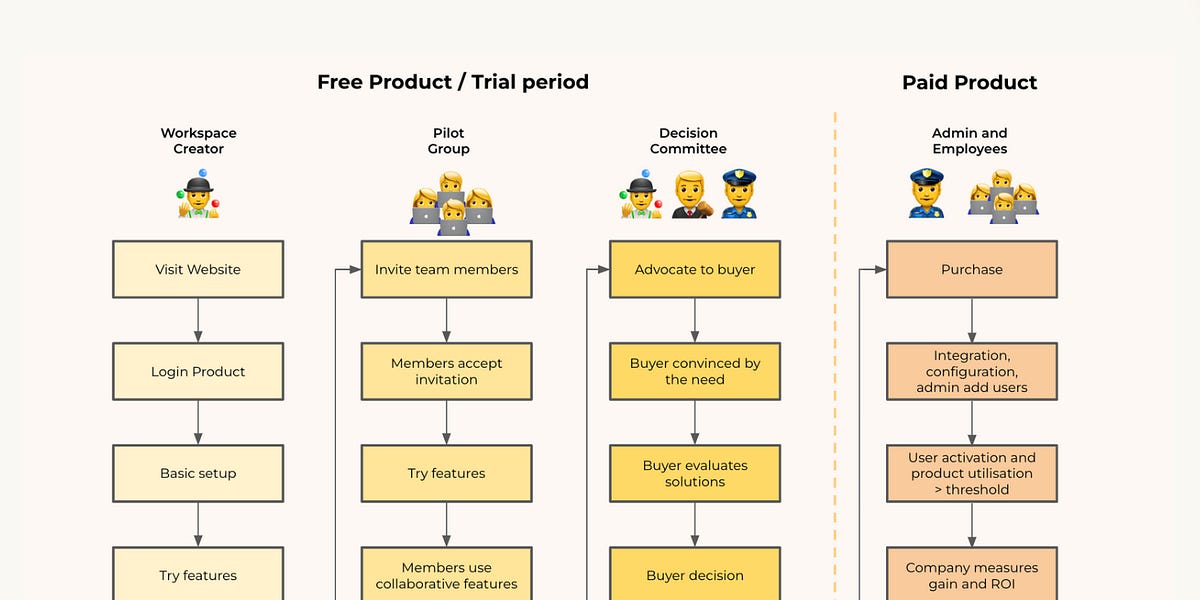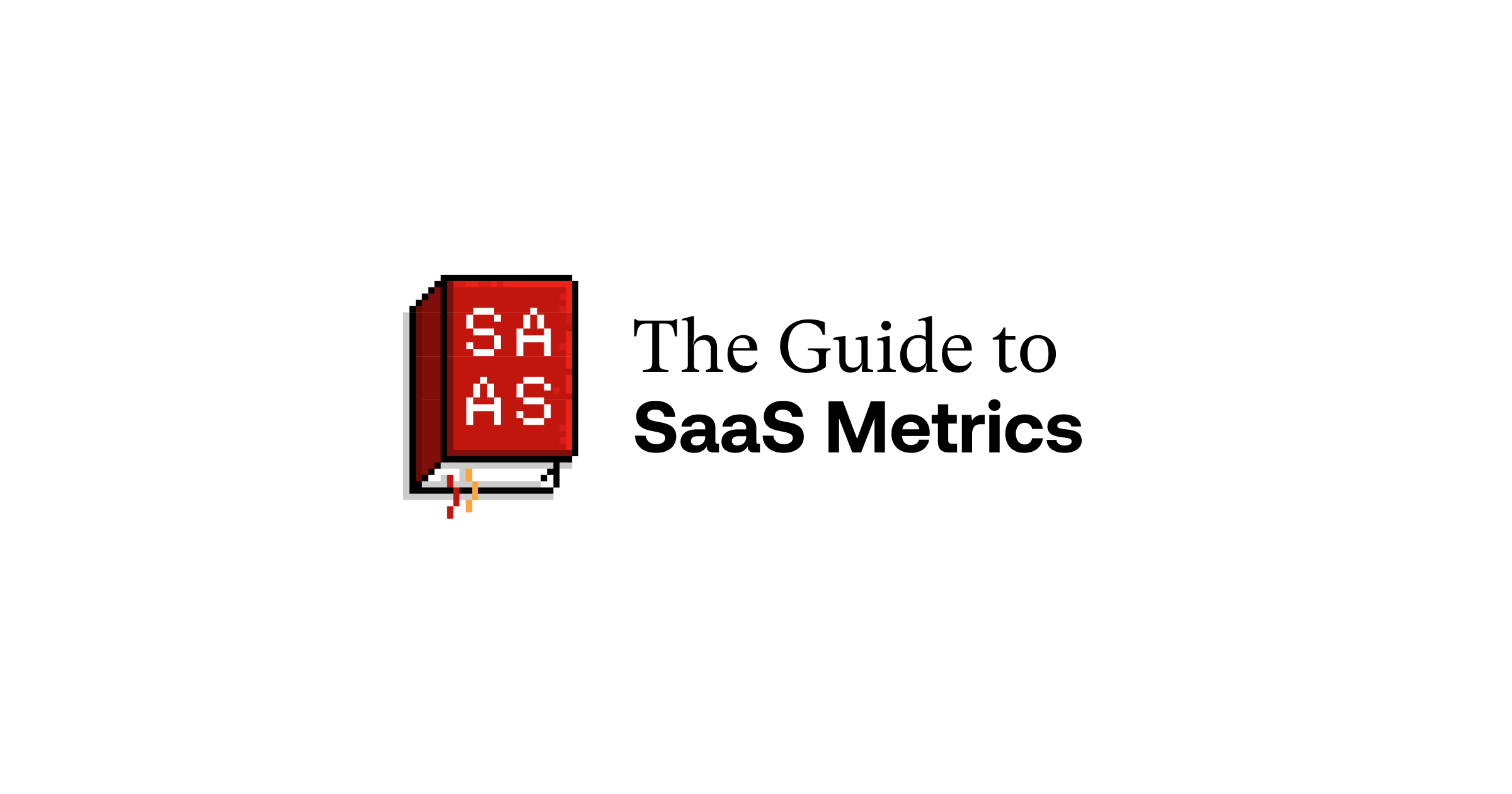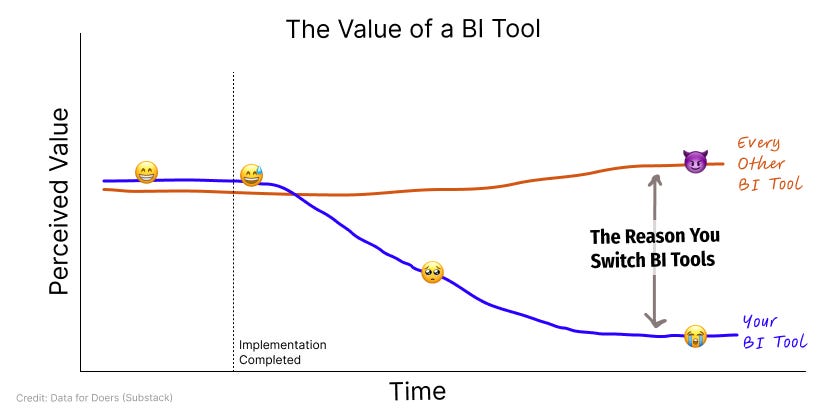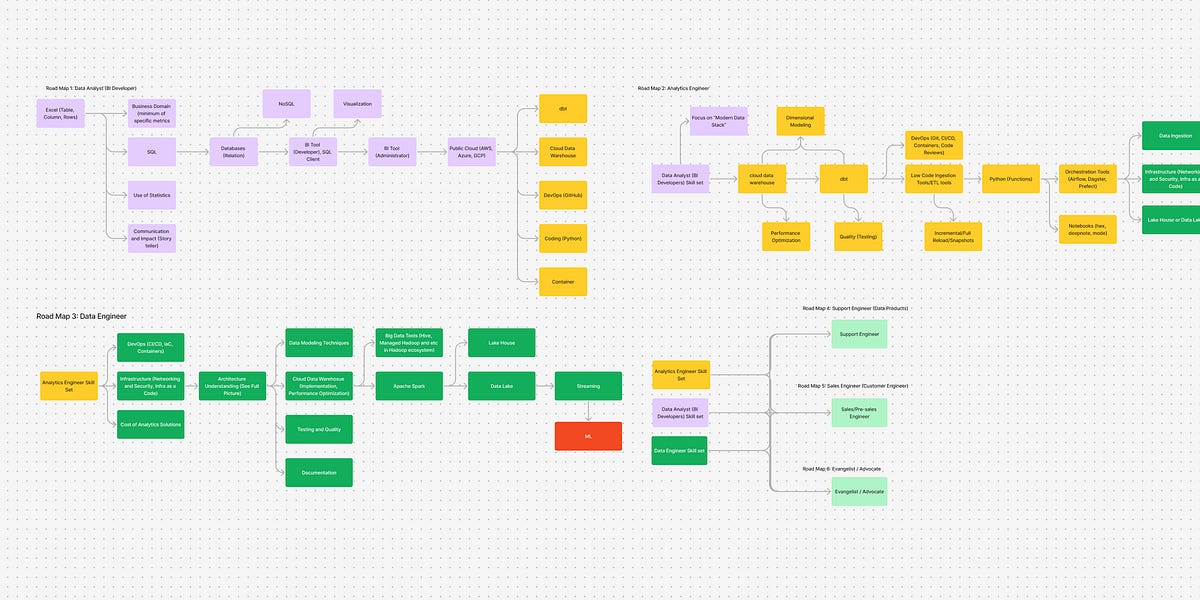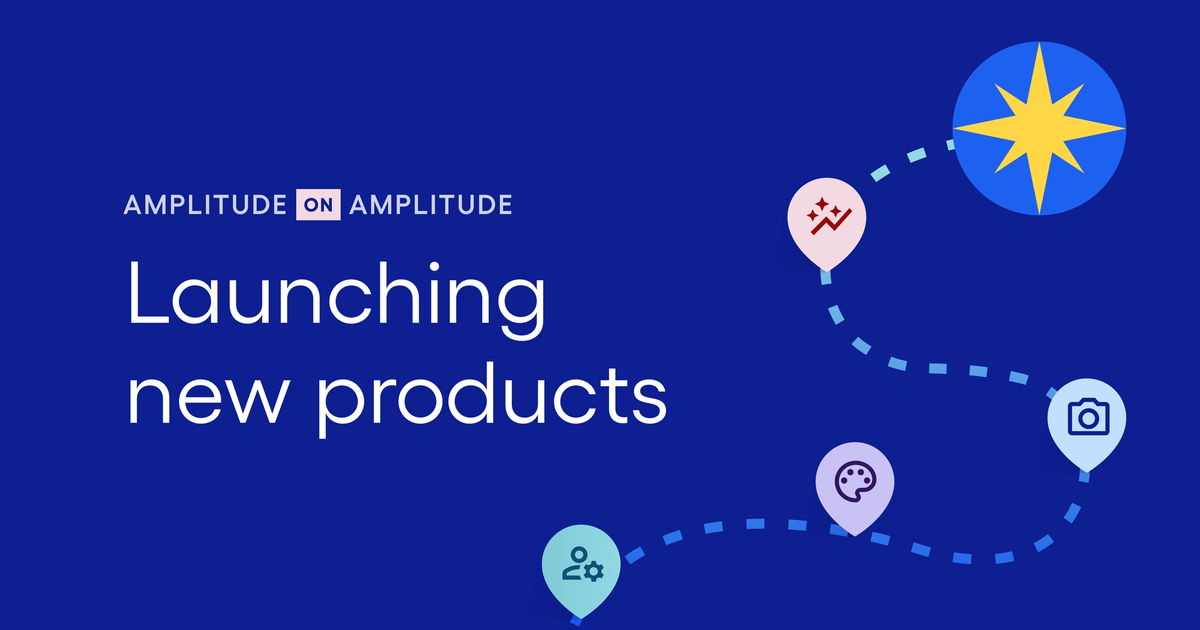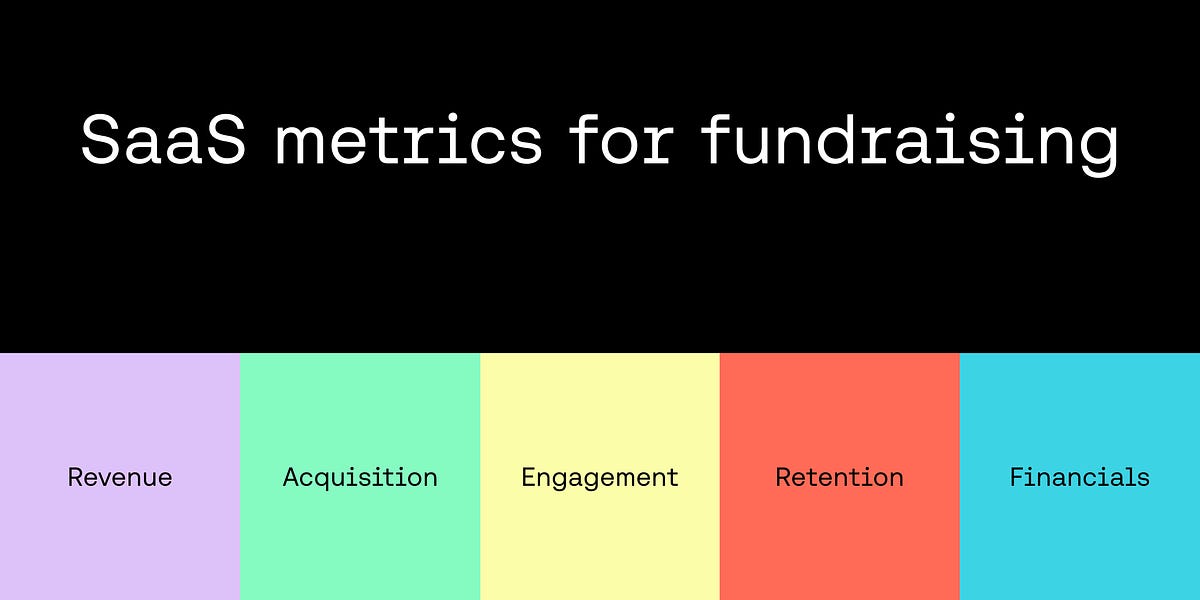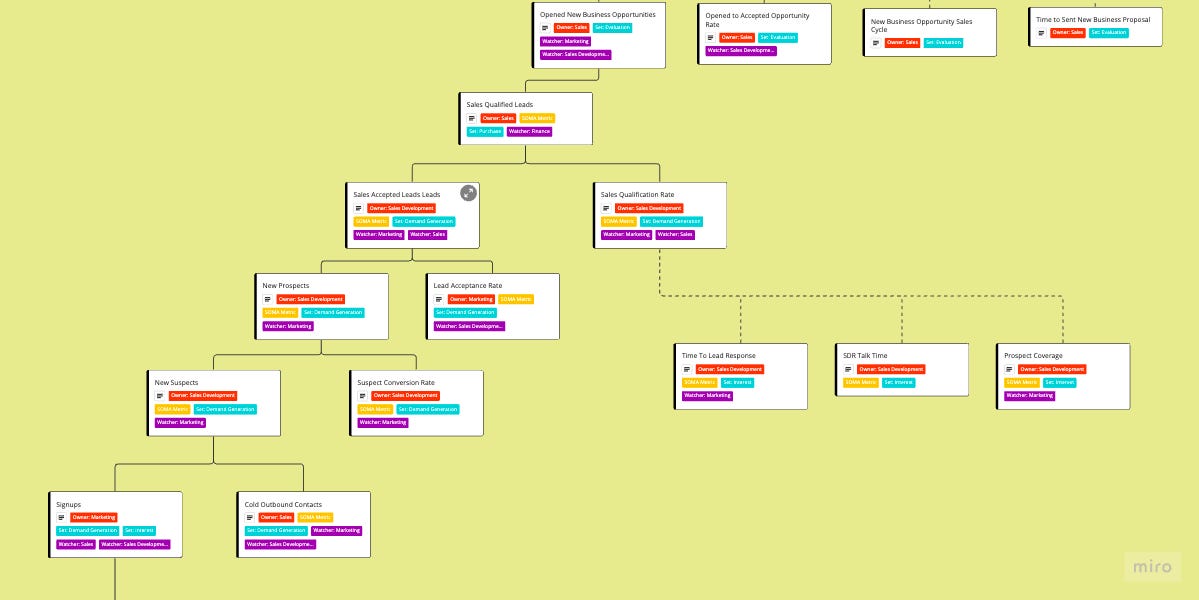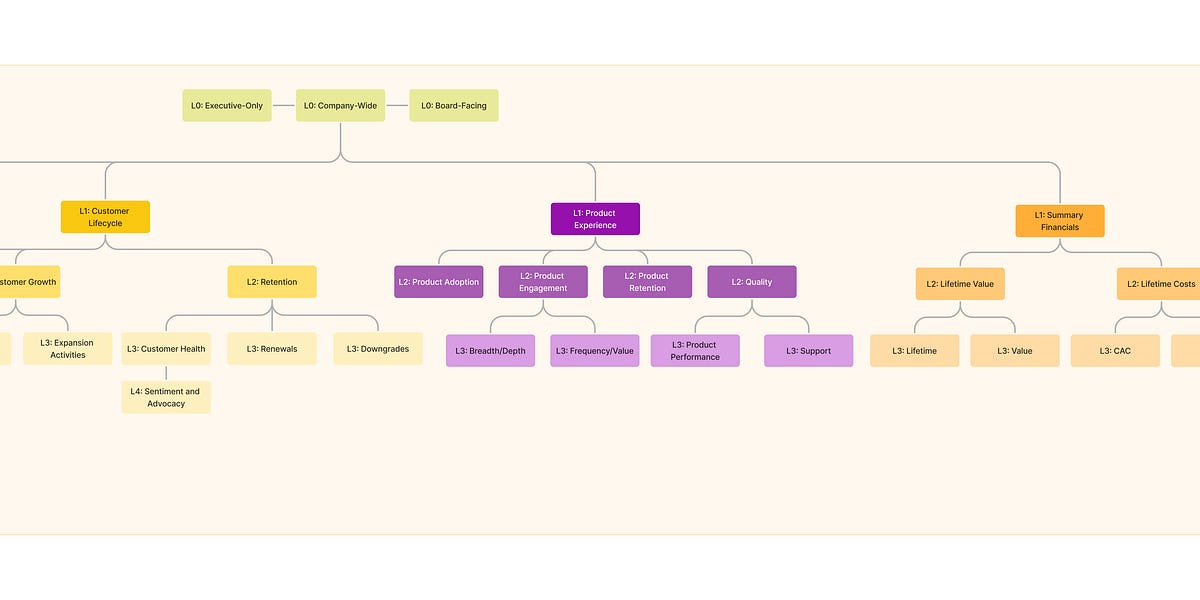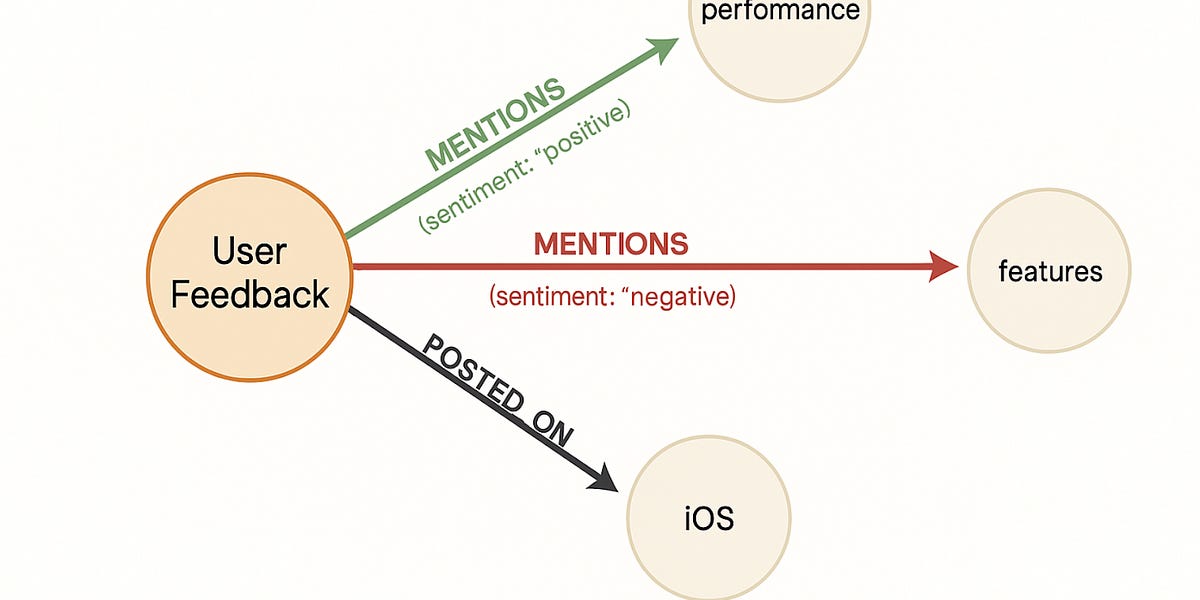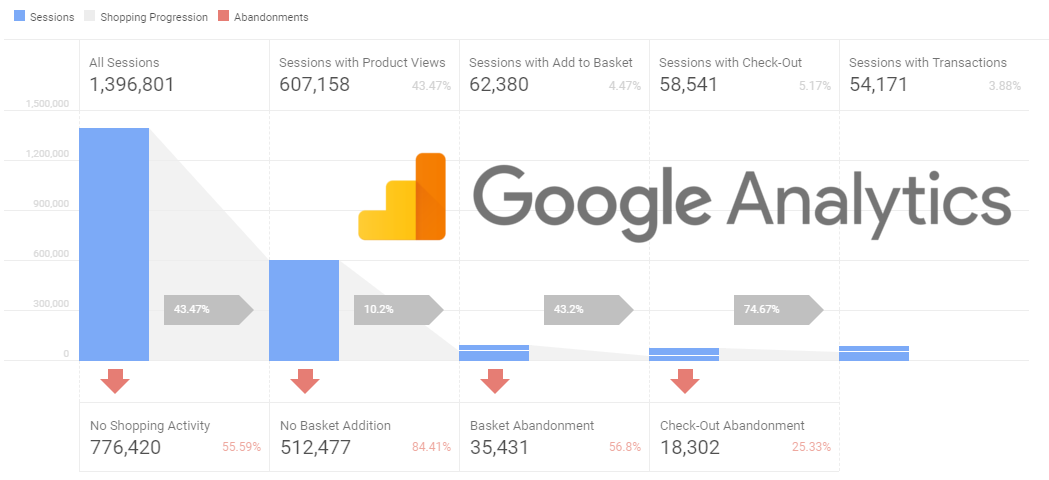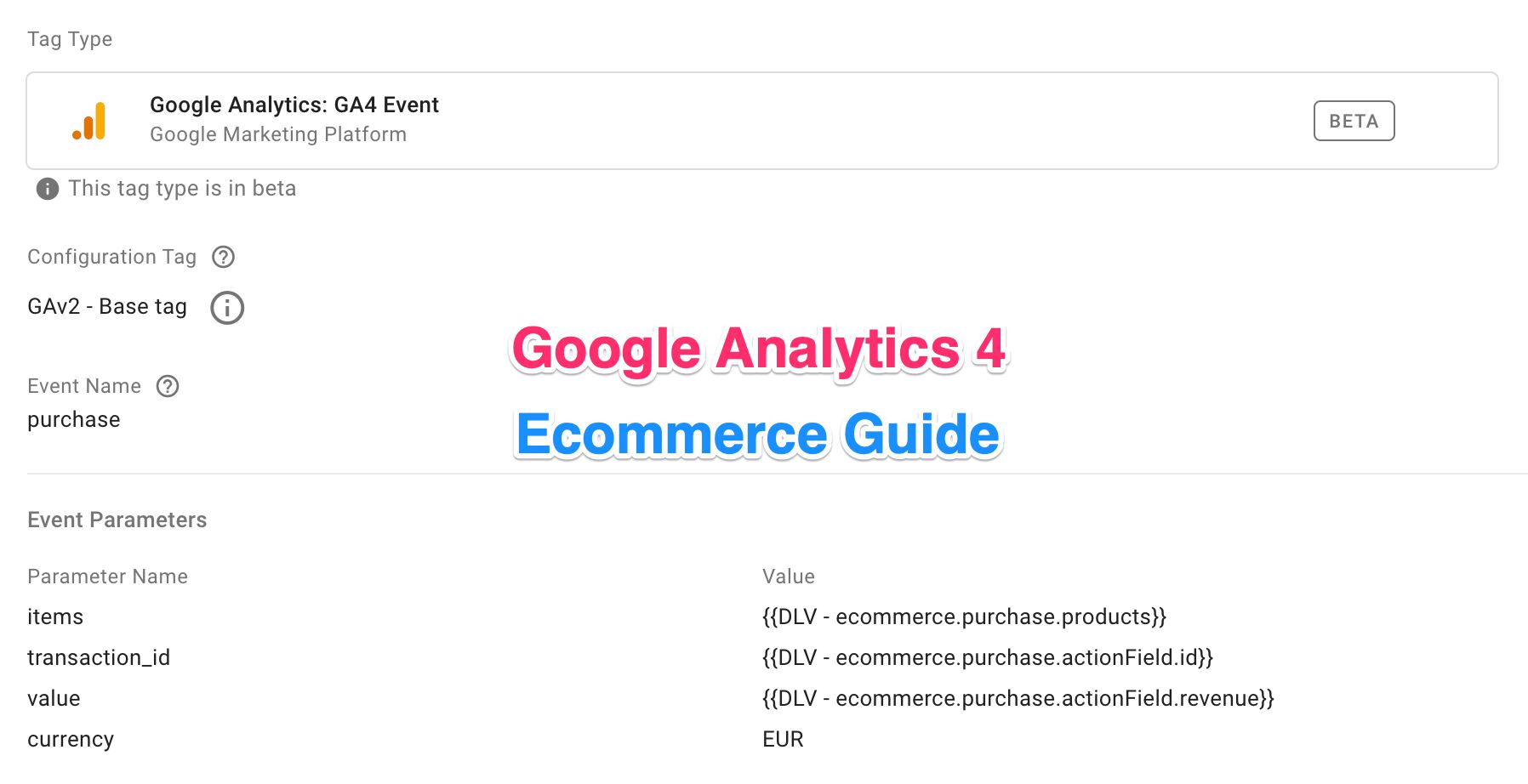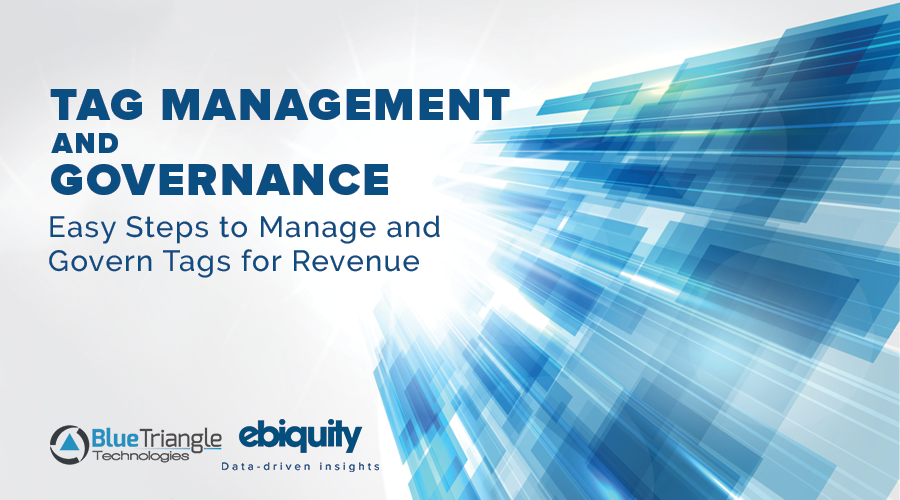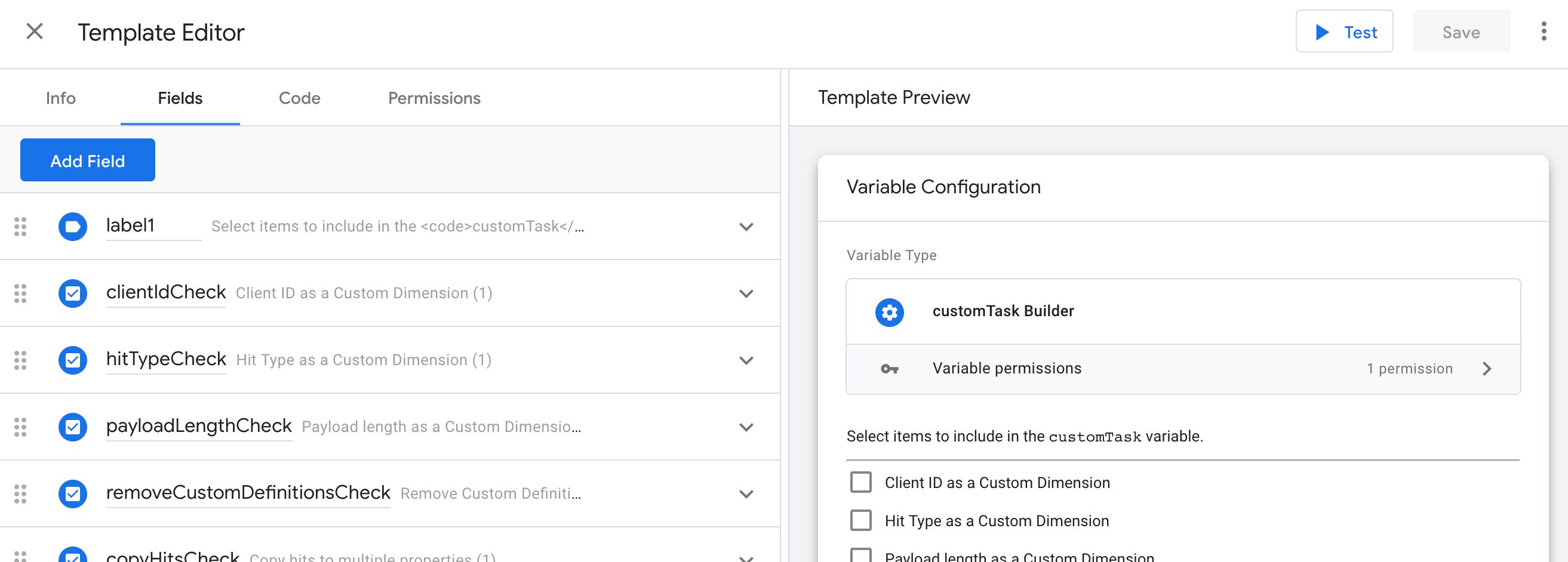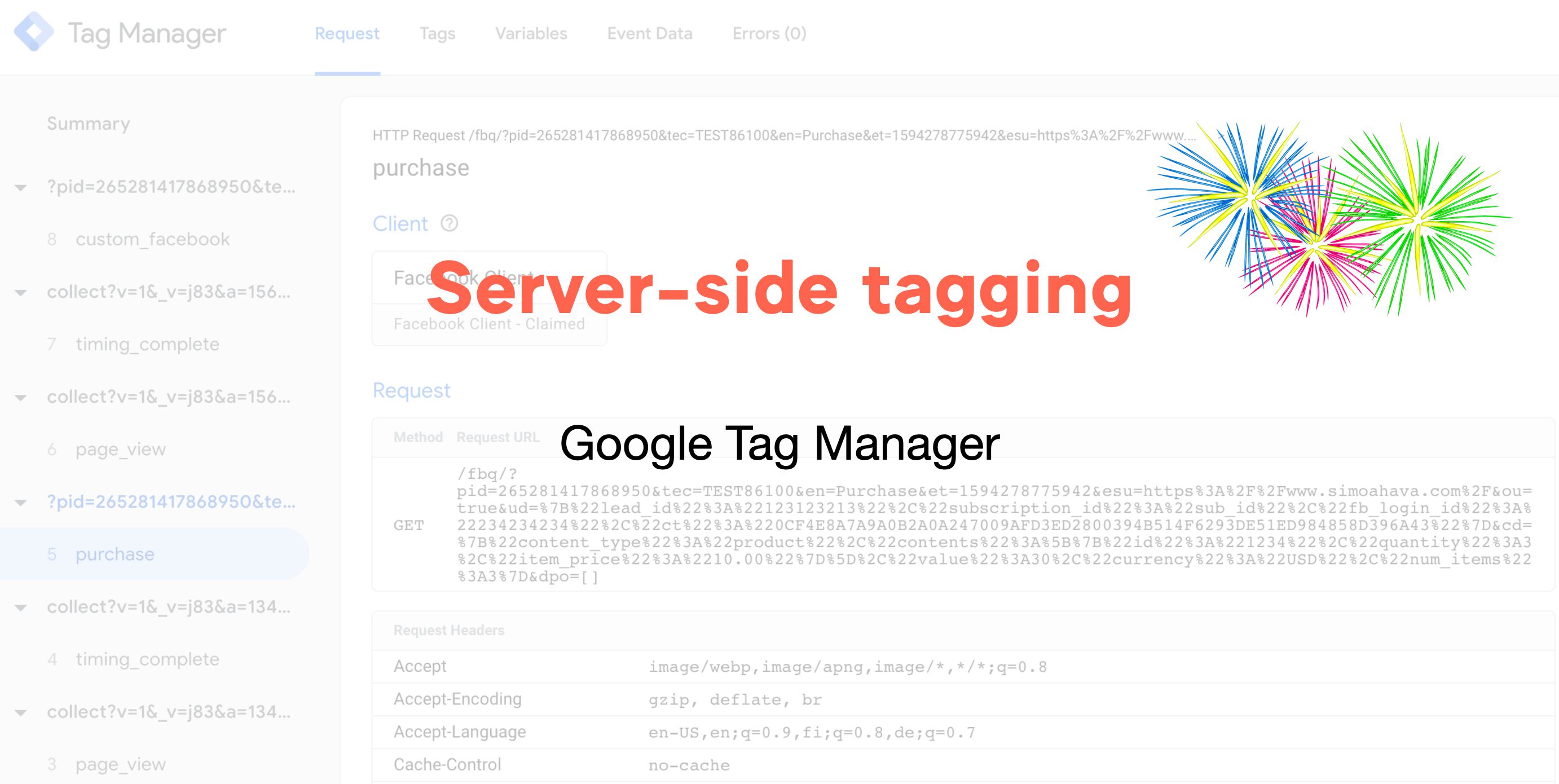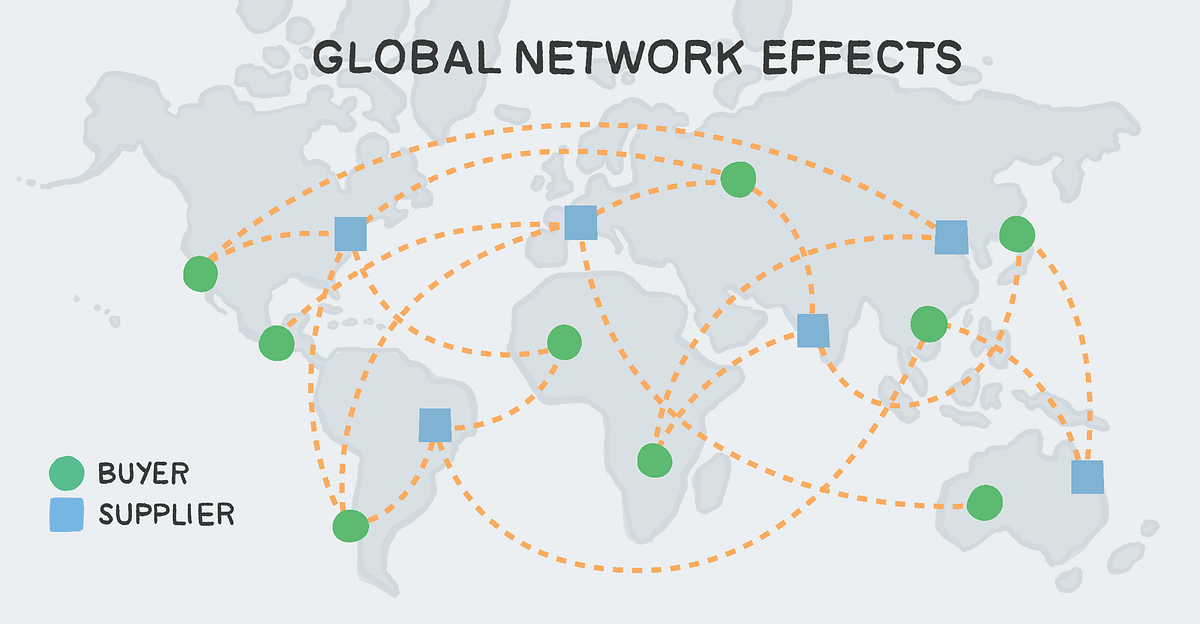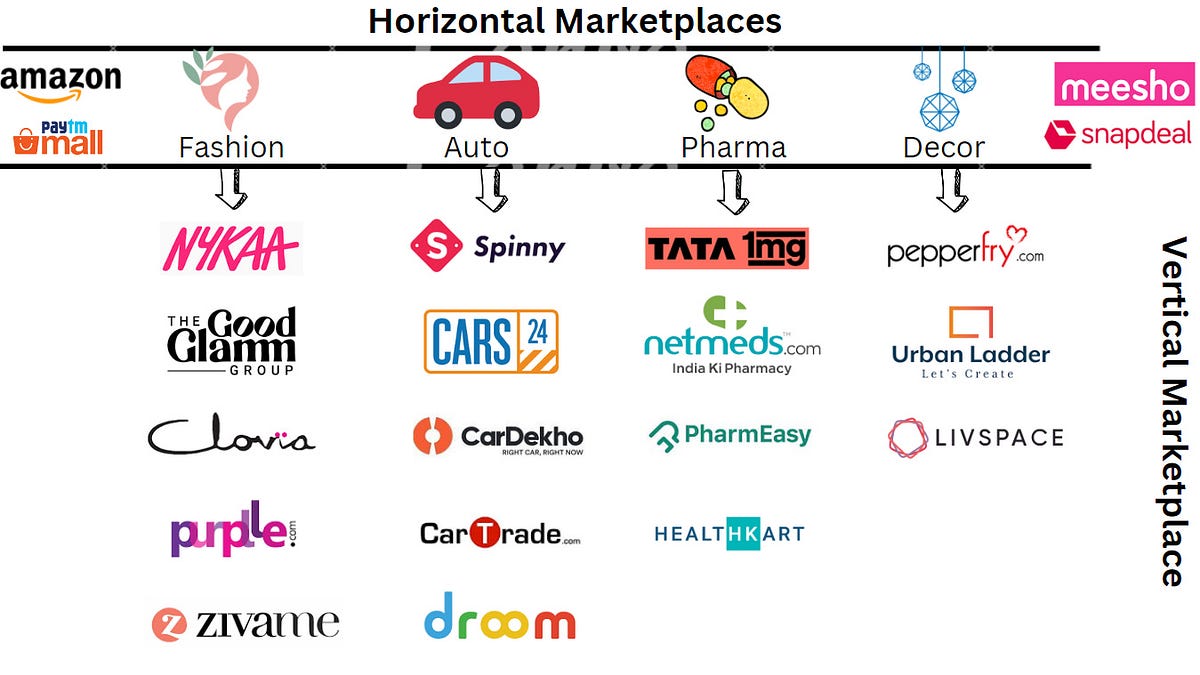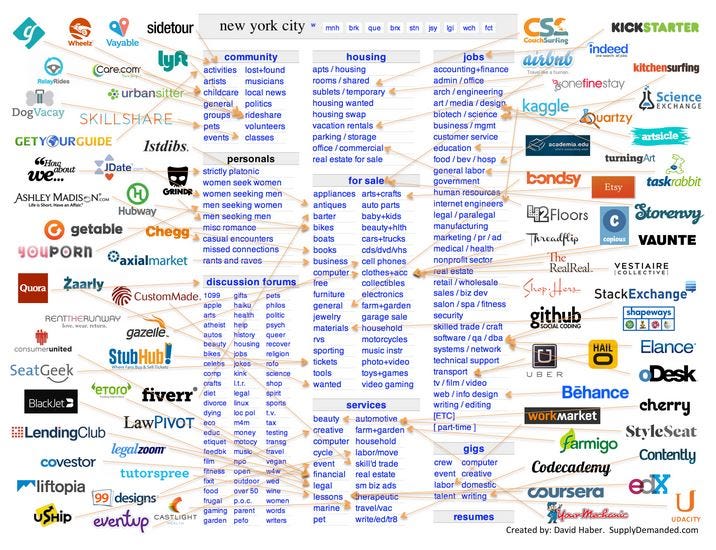This article argues that powerful ideas, even if imperfectly measured, are more useful for business decision-making than perfect measures for less impactful ideas. It discusses the importance of focusing on high-leverage metrics and acknowledging the limitations of data, rather than getting overly bogged down in pursuit of perfect measurement.
Uncategorized Resources
These resources have tags that haven't been mapped to topics yet. They're still searchable and accessible, just waiting to be properly categorized.
Found 131 resources with unmapped tags
Help improve organization
Visit the Tag Management Admin to map these tags to appropriate topics.
Learn about vanity metrics - what they are, how to identify them, and how to replace them with more meaningful KPIs that drive business impact. Understand the difference between vanity metrics and actionable metrics, and get tips for choosing the right metrics to track.
Establishing the core foundations for a successful go-to-market strategy, including defining the ideal customer profile, target market segments, and aligning the product's value proposition with the right sales and distribution channels.
This article discusses key unit economics and efficiency metrics for SaaS businesses, including CAC payback, LTV:CAC ratio, contribution margin, and the rule-of-40. It explains how to calculate and analyze these metrics to understand the underlying profitability drivers and unit-level economics of the business.
Overview of key performance indicator (KPI) fundamentals, including definitions of leading vs. lagging, input vs. output, and actionable vs. vanity metrics. Discusses best practices for creating a consistent metric taxonomy and documentation.
An overview of the various privacy modes and consent management features in Piwik Pro, a popular web analytics platform. Covers techniques for enabling session-only tracking and ensuring compliance with GDPR and CCPA regulations.
Techniques and best practices for implementing client-side data tracking on web and mobile applications, including SDKs, virtual URLs, element selectors, event throttling, and handling browser quirks like ad-blockers and ITP/ETP.
Comparing Adobe Analytics, Google Analytics, and Piwik Pro by Emotional State During Usage
Analyst Skill StackThis article explores the emotional experiences of users during the usage of three popular analytics platforms - Adobe Analytics, Google Analytics, and Piwik Pro. By examining the author's emotional state while using these tools, the article provides a unique perspective on the user experience and decision-making process when selecting an analytics solution.
This article provides an introduction to server-side tracking, highlighting the potential benefits and drawbacks of this approach compared to traditional client-side tracking. It covers the technical aspects of server-side data collection, including latency, schema, and cost trade-offs, as well as the implications for data privacy and compliance.
An in-depth look at how to calculate, analyze, and leverage customer lifetime value (LTV) - a critical SaaS metric for understanding the long-term value of customers and optimizing acquisition and retention strategies.
This article explores why the common marketing channel groupings of 'Paid Search' and 'Organic Search' are too broad and undifferentiated to provide meaningful insights. It delves into the importance of splitting these channels into more granular segments to better understand their unique performance and contribution to the business.
Exploring the key features and trade-offs of column-store data warehouse engines like Snowflake, BigQuery, and Redshift. Understand partitioning, clustering, compute-storage separation, and query optimization strategies for performance and cost optimization.
An in-depth look at the challenges of creating a scalable, multi-site Piwik Pro setup, with a focus on tag management, data layer design, and instrumentation governance. This article provides technical insights and best practices for teams looking to implement enterprise-grade tracking solutions across complex web properties.
This article explores the concepts and techniques for analyzing user activation and onboarding, including measuring time-to-value, identifying 'aha moments', and optimizing the user experience to drive faster activation and higher engagement.
Learn how to detect anomalies in machine learning using Python. Explore key techniques with code examples and visualizations in PyCharm for data science tasks.
This article explores the practical application of the 4 transformation layers (raw, staging, dimensional, and reporting) in a data warehouse architecture. It covers topics like fact/dimension modeling, materialized views, and pipeline orchestration to ensure structure and maintainability in your data infrastructure.
A comprehensive guide on designing and implementing an in-house feature flagging and A/B testing platform for managing product rollouts, experiments, and user segmentation at scale.
Determining when to classify a customer as 'churned' is a critical yet tricky aspect of SaaS analytics. This article explores different approaches for identifying churn signals, diagnosing the drivers of customer contraction, and using churn analytics to inform retention and expansion strategies.
Understand the difference between exploratory and explanatory data visualizations, and how to effectively use each type to support the data analysis workflow - from initial exploration to final presentation of insights.
This article discusses the importance of distinguishing between sessions and users when analyzing user behavior and product usage. It covers key concepts and metrics related to sessions vs. users, and provides guidance on how to leverage these metrics to gain deeper insights into your product's performance and user engagement.
Analyzing the gross-margin contribution of a customer over their expected lifetime, including retention curves, discount rates, cohort LTV, and probabilistic vs. deterministic models. Understanding how to leverage LTV to optimize customer acquisition and inform revenue forecasting.
Covers key revenue metrics for marketplace businesses, including gross vs. net revenue, recurring vs. non-recurring, bookings vs. billings, and other accounting-aligned measures. Explores cohort analysis, revenue waterfalls, and drivers of expansion and churn.
Foundational concepts and best practices for defining, categorizing, and documenting key performance indicators (KPIs) and other business metrics. Covers the taxonomy of leading vs. lagging, input vs. output, and actionable vs. vanity metrics, as well as establishing naming conventions and a single source of truth for metric definitions.
Explores the concept of semantic layers in business intelligence (BI) tools, which provide a governed and reusable data model for dashboards and reports. Covers topics like LookML, Power BI datasets, dbt Metrics, and how to build universal definitions, join logic, and shared dimensions/measures that can be leveraged across multiple BI platforms.
Discusses key metrics and analytical techniques for understanding customer retention, churn, and expansion drivers. Covers topics like logo vs. dollar churn, net revenue retention (NRR), cohort-based survival analysis, and identifying expansion opportunities through upsell and cross-sell.
An in-depth look at the technical and analytical considerations around revenue recognition, such as aligning with ASC 606/IFRS-15 rules, handling multi-element allocations, and analyzing ratable vs. point-in-time recognition patterns. Explores how to build revenue waterfalls, cohort aging tables, and other financial reporting to ensure data integrity and accounting compliance.
Estimating Incremental Lift in Customer Value (Delta CV) using Synthetic Control
Business UnderstandingThis article covers the fundamentals of defining a unique selling proposition (USP) - the single, defensible promise that sets a product or service apart from competitors. It discusses mapping feature vs. benefit differences, crafting a clear positioning statement, and aligning the USP to the ideal customer profile.
As companies innovate and introduce new products and features, the resulting complexity can make further growth more challenging. This article explores the hidden costs and scaling pitfalls associated with successful product experimentation.
How to group customers and users based on their behavioral patterns, including click-stream data, purchase history, feature usage, and session frequency. Covers RFM (Recency, Frequency, Monetary) analysis and customer lifecycle stage clustering.
Using Causal Inference for Measuring Marketing Impact: How BBC Studios Utilises Geo Holdouts and…
Analyst Skill StackThis article discusses how BBC Studios utilizes geo holdouts and causal inference techniques like Propensity Score Analysis (PSA) to accurately measure the marketing impact of their campaigns. It provides a detailed overview of the methodologies and challenges involved in conducting rigorous lift tests to establish causality.
A deep dive on how Airbnb measures and uses listing lifetime value to identify the most valuable accommodation listings for their guests. The article covers the framework and methodology Airbnb uses to calculate LTV, including retention curves, discount rates, and segment-level LTV comparisons.
Dashboards are meant to guide decisions, not create confusion. This guide covers best practices for dashboard design, including layout, chart selection, cognitive load optimization, and narrative techniques to effectively communicate insights.
This article provides insights on how to reduce BigQuery costs by clustering the GA4 events table. It covers key data warehousing concepts like partitioning, clustering, and query optimization to help data professionals manage their BigQuery usage and costs more effectively.
How WeTransfer used a Growth Model to predict marketing ROI and identify biggest revenue opportunities
Business UnderstandingThis article provides an in-depth look at how WeTransfer leveraged a custom growth model to predict marketing ROI and identify their biggest revenue opportunities. It covers the process of building the growth model, how it was used by the product and marketing teams, and the key insights and results that were uncovered.
This article presents a framework for understanding and visualizing unit economics (UE) for a variety of businesses. It covers key concepts around contribution margin, fixed-cost leverage, break-even volume, and scaling effects to help analysts and founders assess the profitability and scalability of their business models.
This article provides a quantitative framework for analyzing and measuring product-market fit, a critical milestone for early-stage companies. It covers the key signals and metrics that can help founders and product teams objectively assess the degree of product-market fit, informing strategic business decisions.
Best practices for implementing secure and governed data infrastructure, including role-based access controls, encryption, audit logging, and GDPR/CCPA compliance policies.
Calculating the gross-margin contribution of a customer over their expected lifetime; including retention curves, discount rates, cohort LTV, probabilistic vs. deterministic models, and segment-level LTV comparison.
This article explores how Apple's Intelligent Tracking Protection (ITP) and other privacy regulations like GDPR and CCPA impact data collection and tracking for marketing analytics. It covers best practices for ensuring data compliance, obtaining user consent, and adapting tracking methods to a more privacy-focused environment.
Develop a deep understanding of how a company creates, delivers, and captures value through its core business model. Explore the key components such as the value proposition, target segments, distribution channels, key resources & activities, partner ecosystem, and profit formula.
Techniques for measuring and forecasting the lifetime value of customers, including retention curves, discount rates, cohort LTV, and probabilistic vs. deterministic LTV models. Linking LTV to other key metrics like CAC and LTV:CAC ratio to assess the efficiency of the business model.
Understand key SaaS metrics that influence profitability, such as recurring revenue, churn, and the 'triangle of despair' - the balance between customer acquisition, retention, and revenue growth.
Strategies for designing pricing tiers, packaging features, and aligning monetization with customer value. Includes topics like good-better-best pricing, value-based vs. cost-plus models, willingness-to-pay segmentation, and packaging mechanics like usage thresholds and feature add-ons.
Strategies and tactics for acquiring, activating, and retaining customers through freemium, free trials, usage-based pricing, and in-product activation loops. Covers the key principles and metrics for building a successful product-led growth motion.
Strategies and tactics for acquiring customers at scale across various marketing channels including paid, organic, partnerships, and viral growth. Covers channel economics, saturation curves, and optimizing the channel mix.
This case study explores how Duolingo used a product-led growth (PLG) framework to drive a 4x increase in daily active users (DAUs). It examines their approach to activation, monetization, and growth strategy, providing insights that can inform data-driven product and marketing decisions.
Explores how Amplitude leverages product-led growth strategies, including freemium models, free trials, usage-based pricing, in-product activation loops, and the handoff from product-qualified leads to marketing-qualified leads.
This article discusses how regression lines and Excel-computed trend lines are poor at detecting signals in KPIs with underlying trends. Instead, the author recommends using a trending XmR chart to better interpret signals in these types of KPIs.
Explore how customer data platforms (CDPs) can be leveraged to build real-time, privacy-compliant data pipelines that stitch together user identities and events across digital touchpoints.
This article discusses the technical approaches and considerations for resolving user identities across devices and touchpoints, including anonymous-to-user joins, deterministic vs. probabilistic linking, and managing identity hierarchies and conflict resolution logic. It covers the role of customer data platforms (CDPs) in stitching customer profiles and how to ensure data quality, privacy, and compliance in these identity-matching processes.
This article discusses the importance of measuring incrementality and causal impact in marketing campaigns, rather than relying solely on ROAS. It covers methods like geo-split tests, hold-out audiences, and ghost ads to establish true lift and isolate the causal effect of marketing investments.
This article revisits the 'fallacy of freemium' and explores how businesses can optimize their pricing and revenue models beyond just offering a free tier. It covers key considerations around subscription tiers, usage-based pricing, hybrid models, and aligning pricing with customer value.
This article dives into how to leverage historical CRM data to uncover deeper insights about your sales pipeline performance. It covers techniques for analyzing sales funnel velocity, deal qualification, forecasting, and other key revenue operations metrics to drive growth.
This article provides an in-depth overview of the key SaaS metrics that founders need to understand when preparing for fundraising. It covers critical areas like revenue recognition, unit economics, customer lifetime value, and growth metrics - all essential for showcasing the health and potential of a SaaS business to investors.
Explores the concept of customer lifetime value (LTV), including how to calculate it, the importance of retention and margin in driving LTV, and using LTV as a key metric for making data-driven business decisions.
A guide to using four causal analysis techniques to measure the contribution of product features and marketing initiatives to key business metrics and KPIs. Covers experimental design, quasi-experimental methods, propensity scoring, and causal graphs to establish causality and quantify feature impact.
Uncover the rare and highly sought-after data skills that set top analytics professionals apart. Dive into cutting-edge techniques and tools that enable deeper insights, predictive modeling, and data-driven decision-making – empowering data analysts, business analysts, and data scientists to drive transformative results for their organizations. Elevate your data mastery and unlock the keys to becoming an indispensable asset in today's data-driven business landscape.
Discover the hidden root cause of your analytics woes and unlock unprecedented insights with this insightful guide. Learn proven techniques to diagnose and address the underlying issues that plague your data analysis, empowering you to make data-driven decisions with confidence across marketing, product, and business domains. This essential resource equips analytics professionals with the skills and strategies needed to transform their data into actionable intelligence and drive meaningful impact within their organizations.
Modular Dimensional Data Modeling offers a revolutionary approach to data engineering, empowering analytics professionals to build scalable, maintainable data models. By leveraging modular design principles and dimensional modeling techniques, this methodology enables streamlined data transformation, effortless integration of new data sources, and enhanced data accessibility for business intelligence and advanced analytics. For data-driven organizations seeking to unlock the full potential of their data, Modular Dimensional Data Modeling provides a strategic edge in navigating the complexities of modern data ecosystems.
Designing effective metrics trees is a crucial skill for analytics professionals who need to extract meaningful insights from complex data. This blog post delves into the techniques and strategies for structuring your metrics in a hierarchical, intuitive manner, enabling you to uncover hidden patterns, identify key drivers, and present data-driven recommendations that resonate with stakeholders across your organization.
Understanding the business context behind data is essential for analytics professionals to deliver impactful insights. By exploring the interconnected factors shaping the organization's operations and objectives, analysts can uncover meaningful patterns and make informed recommendations that drive strategic decision-making. This holistic approach empowers product, marketing, and revenue teams to optimize their strategies and achieve tangible business results.
Struggling with dashboard overload? This blog post offers a solution to the problem of "dashboard sprawl" - the proliferation of dashboards that can overwhelm data teams. By introducing techniques for consolidating and streamlining your dashboard ecosystem, you can enhance data visibility, improve decision-making, and free up valuable time for deeper analytics work. Data professionals seeking to optimize their reporting infrastructure and enhance the impact of their analytics will find this insight particularly compelling.
This blog post offers a valuable lesson for analytics professionals: embrace the natural phenomenon of regression to the mean and let it guide your data analysis. By understanding and leveraging this statistical principle, you can make more informed decisions, avoid common biases, and uncover meaningful insights that drive business impact. Whether you're a data analyst, business analyst, or product analyst, this post provides a thought-provoking perspective on how to approach your work with a deeper statistical understanding.
Actionable insights are the backbone of successful organizations, but they're only as powerful as the ownership and action they inspire. This blog post underscores the vital importance of embedding analytics within cross-functional teams, ensuring insights drive real business impact. Marketing analysts, product managers, and brand strategists will learn proven techniques to transform data into impactful decisions that move the needle for their organizations.
Understanding unit economics is essential for analytics professionals in SaaS and product-driven businesses. This post emphasizes how focusing on granular, per-customer profitability metrics can outlast vanity growth metrics, providing a more sustainable view of business performance. By mastering techniques to analyze customer acquisition costs, lifetime value, and other unit-level metrics, analysts can uncover crucial insights to inform strategic decision-making and drive long-term success.
The blog post explores how AI-driven interactions can inadvertently undermine critical thinking, a key skill for analytics professionals. By understanding the "glazing effect" of AI, data analysts and product managers can learn to leverage AI responsibly and maintain a sharper, more discerning edge in their decision-making processes. This insight is particularly valuable for professionals tasked with extracting meaningful insights from data and driving impactful business strategies.
Knowledge graphs are revolutionizing how we analyze and understand language. By modeling the complex relationships between entities, concepts, and text, these powerful tools enable data scientists, machine learning engineers, and NLP researchers to uncover deeper insights and develop more robust language models. Leverage the power of knowledge graphs to unlock new possibilities in text mining, question answering, and semantic reasoning, transforming the way you approach natural language processing challenges.
While large language models have impressive capabilities, they are not a panacea for all data challenges. This blog post underscores the importance of understanding the limitations of these models and leveraging specialized techniques and tools to tackle complex data problems effectively. Data professionals, including data engineers, analysts, and business intelligence analysts, can benefit from this insight to optimize their data management and analysis workflows.
Julius Fedorovicius explains setup, custom domain config, and client/tag mapping—providing a hands-on starting point for teams moving to server-side tagging for performance and privacy.
Shows how to configure built-in triggers for YouTube and custom solutions for other players, sending play, pause, and progress events to GA—great for sites reliant on video content.
Silver Ringvee details the exact dataLayer structure for products, impressions, and transactions, plus GTM tag/trigger setup—offering a full production-ready ecommerce tracking blueprint.
Anil’s guide walks through installing the Facebook CAPI extension, mapping events, enabling server pipelines, and validating hits—ideal for practitioners integrating server-side ad conversions.
TJ Webster demonstrates building a custom template, mapping variables, and testing—teaching advanced Tealium users how to handle niche pixels that aren’t in the marketplace.
Shows how to add the Consent Mode tag template, write JavaScript extensions, and test consent signals—useful for teams running Tealium who must align Google tags with user consent.
Yehoshua Coren walks through adding the base pixel, configuring AddToCart and Purchase events, and troubleshooting—perfect for marketers needing a reliable FB Pixel setup.
Covers mapping CMP results to GTM consent settings, adjusting triggers, and verifying no tracking before consent—essential hands-on guidance for GDPR-compliant tagging.
Julius Fedorovicius explains GA4’s event model, then builds custom click tracking step by step—ideal for learners who need practical instruction on sending site-specific interactions to GA4 through GTM.
Simo Ahava shows how to model the GA4 ecommerce dataLayer, configure each ecommerce event tag, and debug the results—giving practitioners a ready-made blueprint for robust online-store tracking.
Simo Ahava explains how a structured JavaScript data layer bridges developers and marketers, carries business data for all tags, and why governance is critical when multiple stakeholders are involved—foundational reading for scalable TMS architecture.
Rafael Campoamor shows how to build custom tag templates, craft precise load rules, manage event specs, and use version control—knowledge transferable to any advanced TMS setup.
Margub Alam details governance frameworks, rigorous data-layer design, version control, tag-audit cycles, and performance tuning—everything needed to run a robust, scalable TMS in 2025.
Jim Gordon reflects on tag-management evolution and predicts governance, QA, and tag-bloat control as the next big challenges—offering war stories and practical tips to keep large implementations sane.
Digital-analytics architect Amulya Thorat traces the browser execution flow—container script, library load, tag trigger—showing what truly happens under the hood and how to debug performance issues.
Josh West lays out strategic questions every organisation should answer before picking a tag manager—covering IT vs. marketing ownership, testing workflows, scalability, and data-governance trade-offs.
Cardinal Path details eight built-in features—user roles, environments, 2-step verification, tag blacklists/whitelists—that harden GTM against errors and unauthorized changes while supporting parallel team workflows.
Yehoshua Coren & Sam Briesemeister share principles (robust data layer, built-in variables, modular tags) and coding standards that keep massive multi-site GTM deployments resilient to site changes.
Jon Meck shows how trigger exceptions prevent accidental fires, enable safe preview-only testing, and reduce trigger clutter—boosting reliability in complex GTM containers.
Guides readers through naming conventions, duplicate-tag detection, container-size monitoring, consent checks, and a step-by-step quarterly audit routine—ensuring long-term data accuracy and performance.
Combines organizational policy, tag inventory, monitoring, and real-world case study (Marriott tag reduction) to show how disciplined governance boosts UX, productivity, and bookings.
Joe Christopher outlines failure modes (outages, performance hits) and prescribes roles, QA, rollback plans, and audits that protect revenue and data trust—vital for large teams running mission-critical tags.
Presents experiment results, quantifies latency per tag scenario, and lists seven best-practice optimisations (container audits, trigger timing, server-side migration) to keep tracking fast without sacrificing data quality.
Shows how to use Elastic Beanstalk, custom domains, SSL, scaling options, and contrasts AWS flexibility with GCP simplicity—critical for enterprises standardising on AWS while adopting server-side tagging.
Explains why Custom Templates are a paradigm shift for GTM, walks through the Template Editor, sandbox policies, permissions, and reusable design patterns—essential for extending GTM safely in enterprise environments.
This comprehensive guide explains the why and how of server-side tracking, including architecture options like proxy vs. cloud-edge, GTM Server basics, and phased rollout strategies. It's ideal for teams moving beyond browser-based analytics and looking to improve data quality and privacy compliance.
The Impact of Server-Side Tracking on Privacy — Debunking Myths
Server-Side Tracking & TagmanagementDigital Power unpacks misconceptions about SST and GDPR. It explains how server-side setups still require user consent but help reduce data risk through techniques like filtering and pseudonymization. Great for legal, marketing, and analytics teams aligning tracking with privacy obligations.
This beginner-friendly post compares traditional browser-based tags to server-side proxies, using real-life diagrams and examples. It shows how server-side setups help recover lost cookie data in privacy-focused environments like Safari. A five-minute primer to get up to speed quickly.
Tessa Pinkerton provides a balanced overview of server-side tracking, covering benefits like ad-block resilience and faster loading, along with honest drawbacks such as added costs and maintenance. A solid orientation for digital marketers and analytics newcomers.
This canonical post covers everything from GTM Clients and endpoints to data validation and custom domain setup. Simo Ahava walks through how GTM Server works under the hood, providing developers with the context and tooling to implement it confidently.
Matthew Hooson introduces the UPDATE framework: Understand, Plan, Declutter, Action, Transfer, Evaluate. Each stage details risks, deliverables, and stakeholder sign-offs, helping teams run smooth, cost-effective migrations to server-side GTM.
Agency, Transparency, and Control: Unsolved Problems With Server-Side Tagging
Server-Side Tracking & TagmanagementThis thought-provoking piece questions the default narrative that SST solves everything. Simo Ahava highlights issues with user agency, hidden data flows, and consent complexity in server-side setups. A must-read for teams focused on ethical data collection.
This workbook introduces the 'double three-layer' framework for event structures, organized by customer, product, and interaction layers. It's designed to help teams build a lean, analyzable event taxonomy that ties directly to business questions. Essential reading for anyone starting a tracking setup from scratch.
This post lays out a practical naming convention for analytics events using the object-action schema. It emphasizes clarity, casing consistency, and dot/underscore delimiters to reduce mystery events and promote scalability. Great starting point for taxonomy design.
Building Scalable Product Analytics: A Framework for Custom Event Taxonomy & Governance
Tracking Plan & Event TaxonomyThis framework balances two pillars: how to structure events (verb-noun naming, hierarchies, required properties) and how to govern them (ownership, versioning, validation). It's a great blueprint for teams dealing with scale and event sprawl.
This case study shows how Pipedrive split responsibilities for event instrumentation: PMs define, engineers implement, and analysts advise. It walks through their workflow for designing, documenting, and QA'ing event data. A pragmatic guide for collaborative tracking setups.
Guide to Customer Data Tracking Plans: Why They Matter and How to Build One
Tracking Plan & Event TaxonomyThis guide explains the purpose and structure of a tracking plan, including what to log, where, and why. It includes tactical steps for plan rollout, collaboration, and long-term maintenance. Useful for teams looking to formalize their tracking strategy.
Victor Ackerhans suggests starting from the business questions you want to answer and designing events backwards from the dashboard. His three-step guide is practical for small teams and early-stage companies just getting into structured analytics.
This post introduces the Core Entity Test to decide when to create new events versus reusing existing ones with more properties. It includes real-world pitfalls around analytics debt and rising costs, with insights on designing for long-term maintainability.
Paul Koullick argues that naming events well is a UX challenge. He lays out conventions for naming (verb-noun, title case, property bias), and introduces a workflow where every new event is reviewed for clarity and governance. Great for scaling teams.
Based on product audits, this post explains how exceeding 30 core events leads to confusion, duplicative metrics, and inflated tooling costs. Timo recommends modeling a small set of core entities and using properties to capture UI-specifics. Includes governance tips.
In this Amplitude reintegration story, Moss Pauly shows how reducing events to a <30 schema improved usability for analysts. Events were refactored to prioritize clarity and team ownership, with event routing and validation set up before hitting Amplitude.
João Lousada outlines how a data governance strategy prevents analytics drift. He emphasizes the role of casing rules, ownership tags, and source-of-truth documentation in keeping instrumentation aligned with product changes. Great for teams scaling analytics without chaos.
Ha Nguyen shares a candid story from her time at a fast-growing fashion startup, where strong revenue masked poor unit economics. She reveals how excitement about top-line growth distracted from the reality that each customer lost money. The essay warns founders not to confuse growth with viability.
This beginner-friendly article breaks down unit economics into intuitive concepts, using simple business examples from taco stands to SaaS. Bret Waters explains how cost per unit, contribution margin, and scale determine financial sustainability. Ideal for those new to business metrics.
Drawing on her experience in fast-growing startups, Prerna Goel warns against deferring questions about profitability. She stresses that understanding cost structure and margins early on is essential for scaling responsibly. A reflective guide for founders in high-growth environments.
From an analyst's perspective, Timo Dechau critiques the over-reliance on vanity growth metrics. He shows how dashboards rarely incorporate core cost insights or contribution margins, and how this disconnect skews decision-making. A wake-up call for teams building analytics around business KPIs.
Mina Mutafchieva explains how unit economics can serve as a diagnostic tool rather than just a reporting metric. She shows how to analyze customer cohorts, align spend with ROI, and avoid common pitfalls like cost-cutting without insight. Packed with real-world boardroom questions and frameworks.
Rick Zullo and Chelsea Zhang analyze why early DTC brands struggled to scale profitably. They discuss issues like inflated CAC, ad tracking limits, and high return rates—and how these led to omnichannel pivots. A detailed breakdown for operators and investors focused on margin-driven growth.
William Morales examines the broken economics behind neobanks: high CAC, minimal revenue per user, and long payback periods. He uses napkin math to show why subscriptions or lending products are essential to survival. A hard-hitting read for fintech operators and analysts.
Former Airbnb PM Jonathan Golden outlines a clear framework to evaluate marketplace viability. By mapping products by transaction size and frequency, he shows how to predict and improve unit economics through incentives and pricing. Excellent reference for marketplace builders.
This influential essay introduces Aggregation Theory, which explains the power of internet companies like Google and Facebook that aggregate demand. It explores how zero distribution costs enable them to scale rapidly while owning the user relationship. A must-read for understanding platform dominance in digital markets.
Christoph Janz outlines five distinct strategies for building a $100M company, ranging from enterprise (elephants) to consumer (flies). He analyzes pricing models, customer acquisition, and go-to-market approaches to help founders identify their optimal growth path. A foundational read for SaaS entrepreneurs and startup operators.
This essay breaks down how predictable revenue models—especially SaaS—drive higher valuation multiples. Gurley introduces a revenue quality scorecard, making a strong case for why investors love subscriptions over transactional income. Essential for founders preparing for fundraising or long-term scaling.
Saurabh Nair outlines the fundamentals of marketplace businesses, emphasizing the value of enabling transactions between buyers and sellers. He describes monetization strategies such as commissions, listing fees, and value-added services. A solid primer for operators and analysts entering the platform economy.
Erik Torenberg explores the dynamics of building and investing in marketplaces. He breaks down core concepts like liquidity, trust & safety, and take rates. The piece includes practical advice for founders on achieving product-market fit in multi-sided networks. Valuable for startup teams and early-stage investors.
This article presents the first level of the Hierarchy of Marketplaces framework, focusing on creating user happiness and scalable engagement. Tavel draws on real examples to show how leading marketplaces like Etsy and Airbnb progressed through each level. Useful for marketplace builders aiming for long-term defensibility.
Tavel extends her original framework to highlight how companies can build products that retain users over time. She categorizes engagement loops and stresses the importance of value creation at each step. Highly relevant for product managers and growth teams focused on long-term user engagement.
Jayendra More explains the ad-supported business model, where products or services are free for users but monetized via advertising. He explores the trade-offs in product strategy and revenue predictability, making it a useful read for PMs building or analyzing media and content businesses.
Joost Rietveld unpacks how freemium strategies can be effective if properly executed. He draws parallels between SaaS, gaming, and content platforms, exploring key levers like conversion rates, engagement triggers, and monetization points. A thoughtful read for those designing freemium models or evaluating them.
This post by A16Z outlines the most important KPIs for two-sided marketplaces. Metrics include match rate, take rate, market depth, and concentration of supply. It offers a rigorous diagnostic toolkit for founders, investors, and operators looking to assess or pitch marketplace startups.
Bobby Pinero discusses how introducing a freemium tier at Equals led to a spike in sign-ups but damaged engagement and revenue. He walks through the misalignments in onboarding, value delivery, and support strain, offering five concrete lessons for anyone considering freemium models. Cautionary and highly actionable.
Jamie Sullivan and Alex Immerman use data from 60+ public tech companies to explain how each turn of the LTV:CAC ratio flows through to margins, reinvestment capacity, and ultimately valuation. A clear, numbers-backed argument for why every startup needs to understand their unit economics.


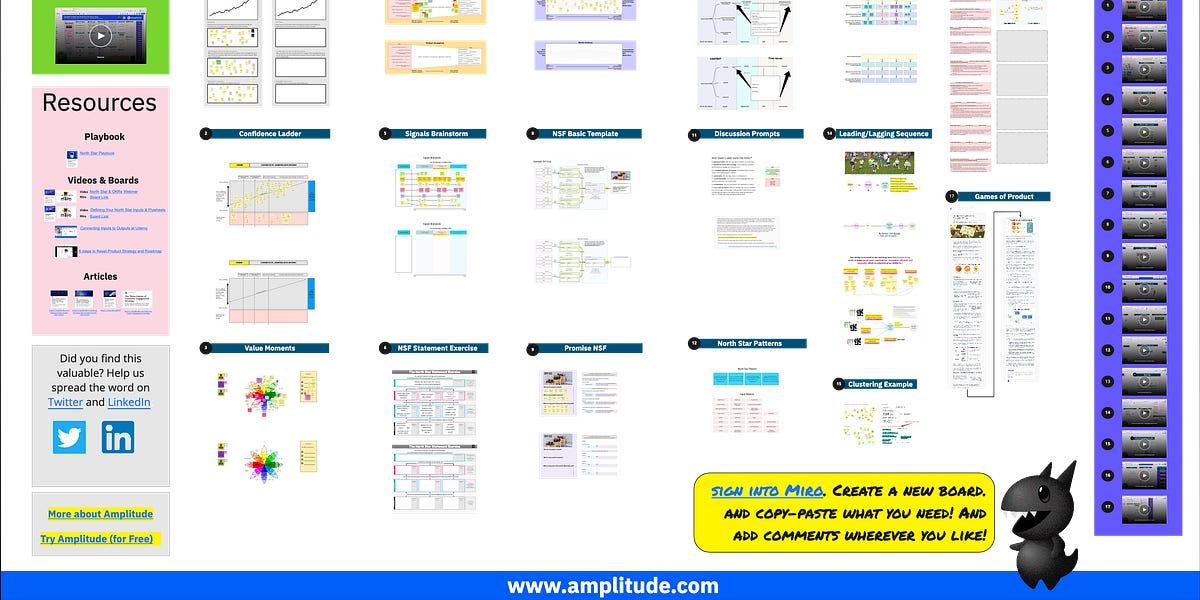

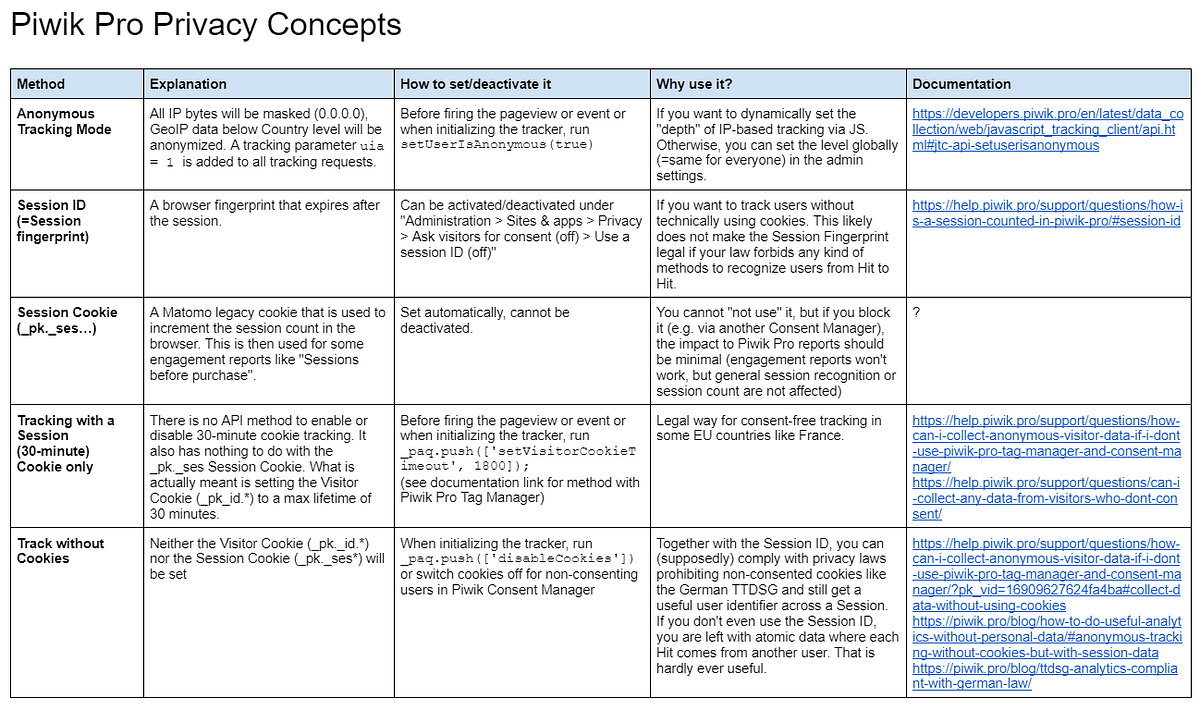
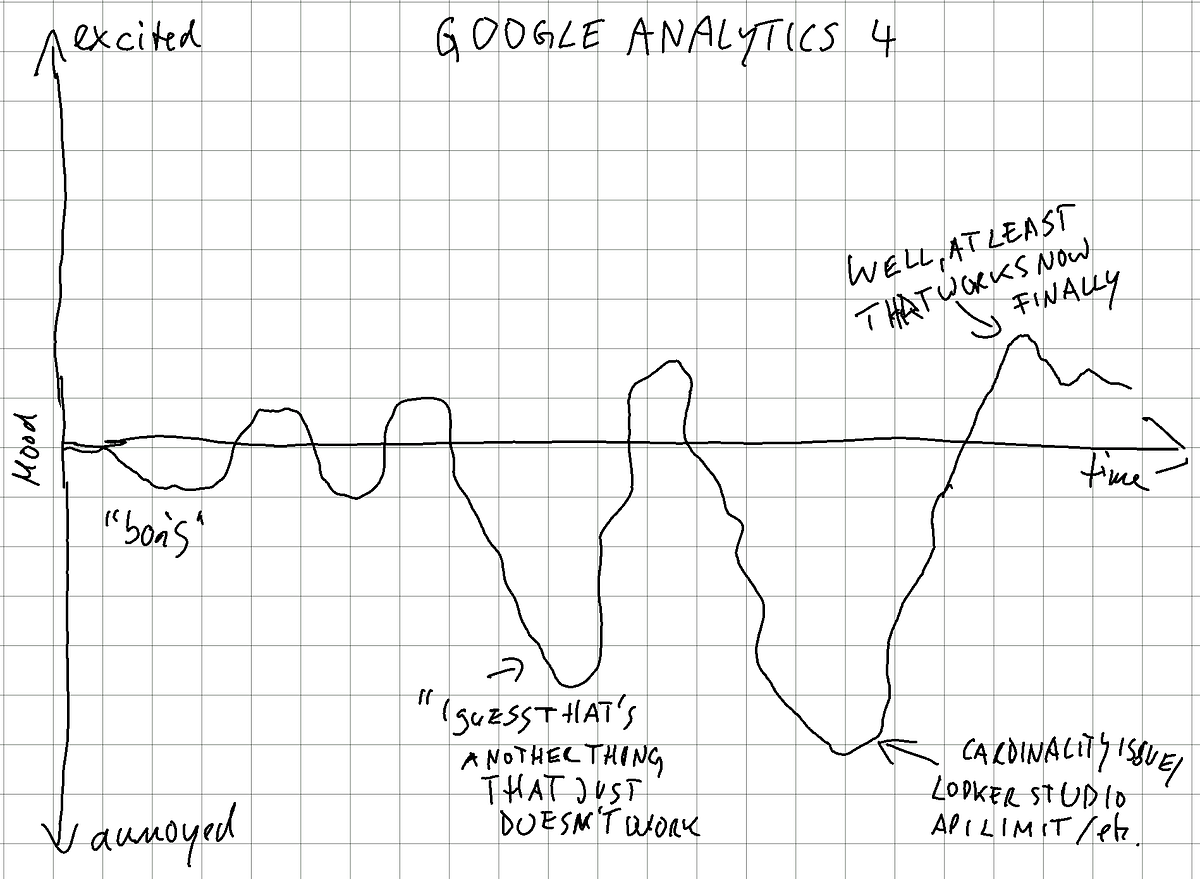






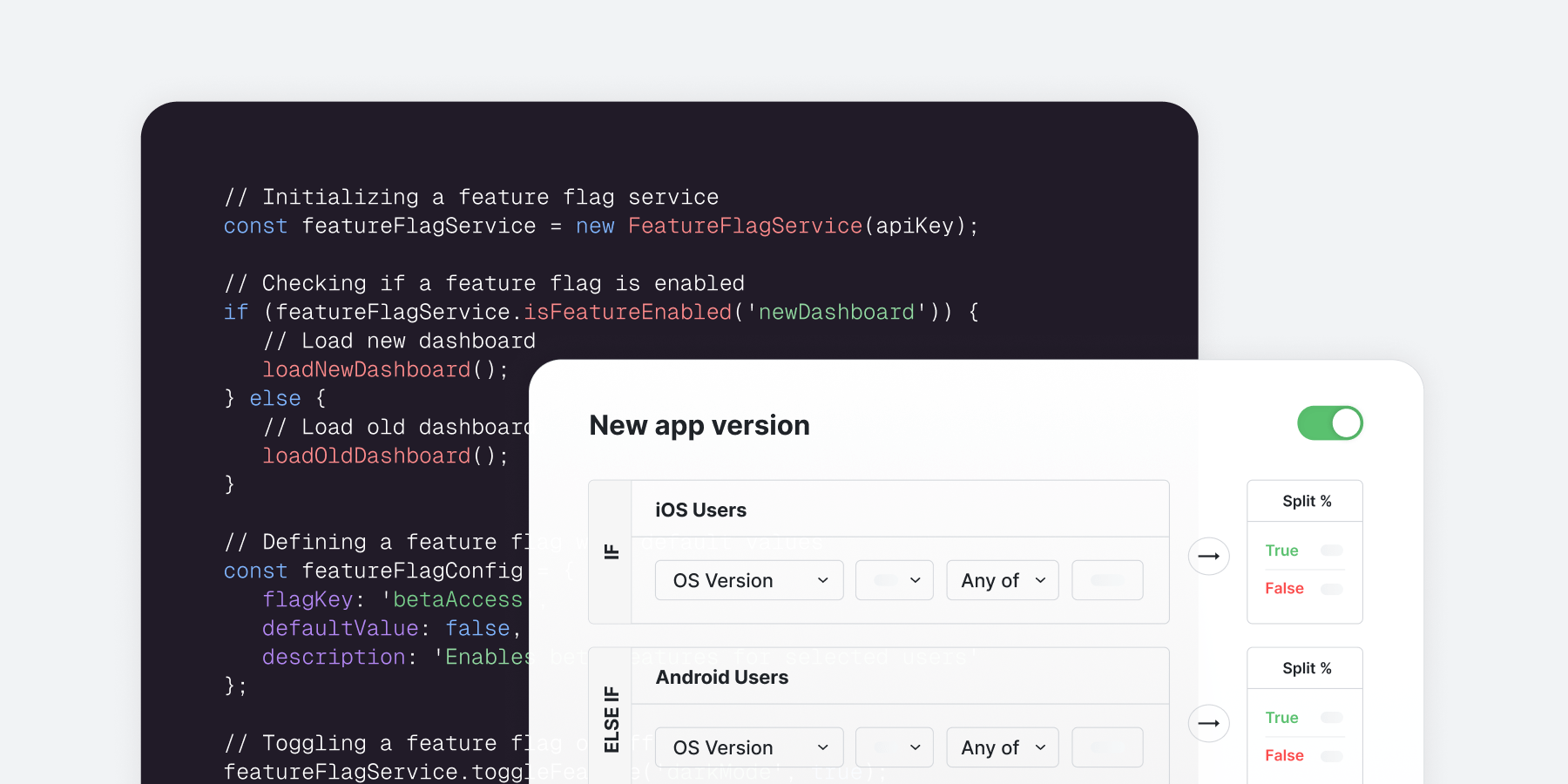




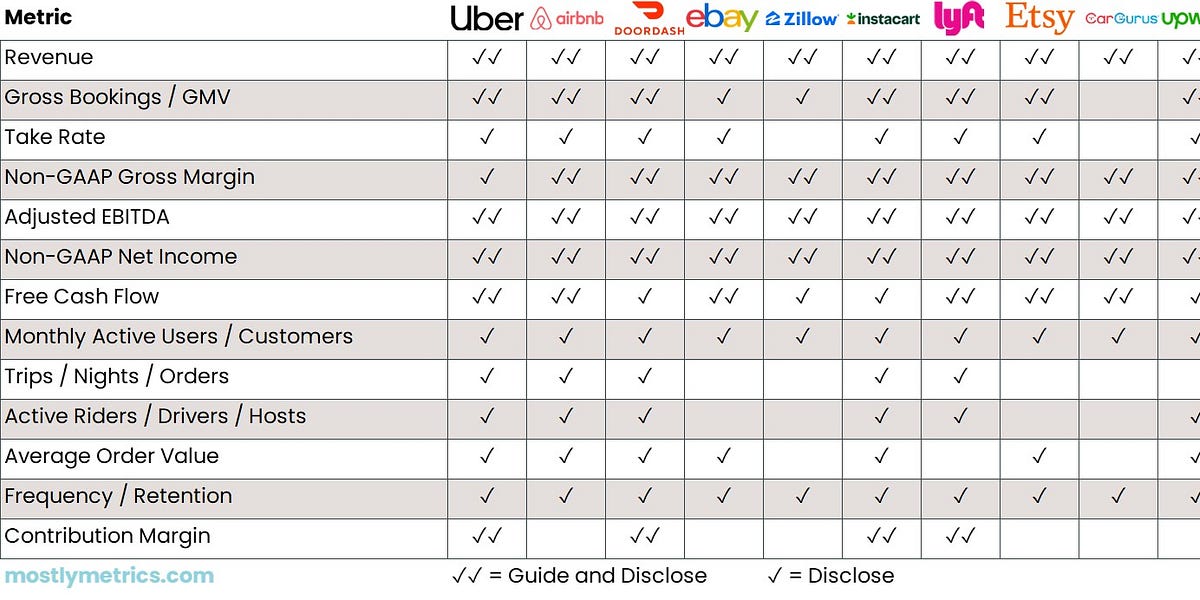
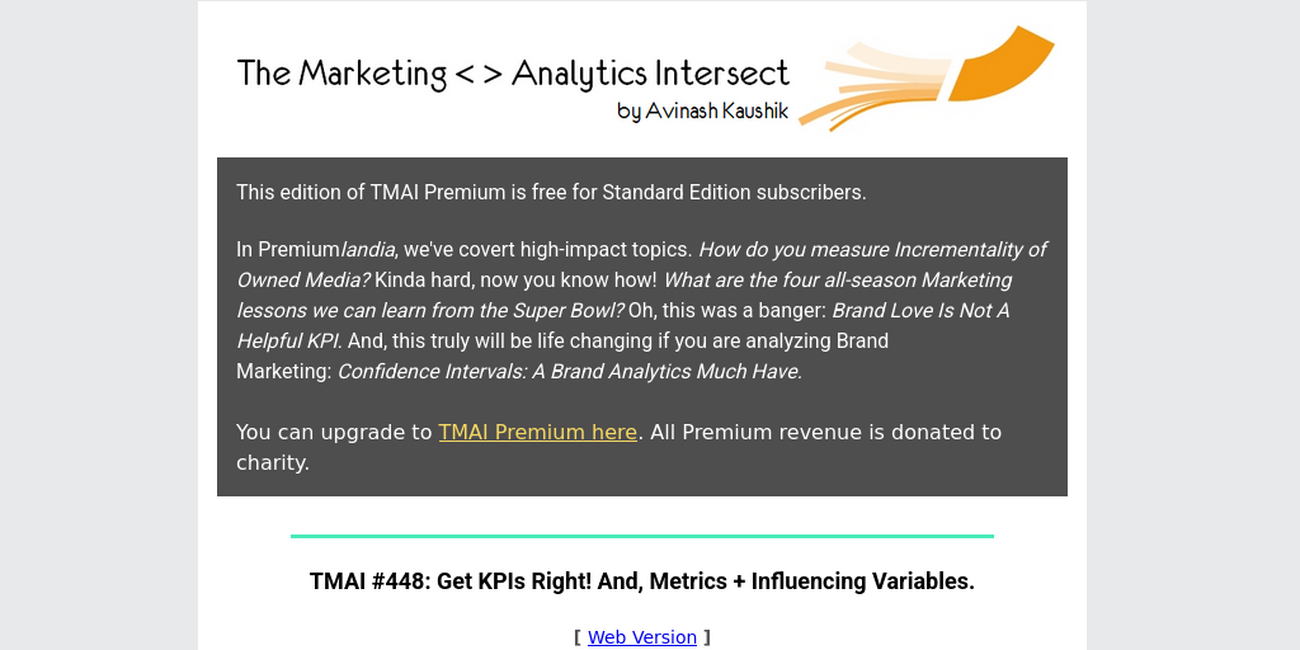
.png)
